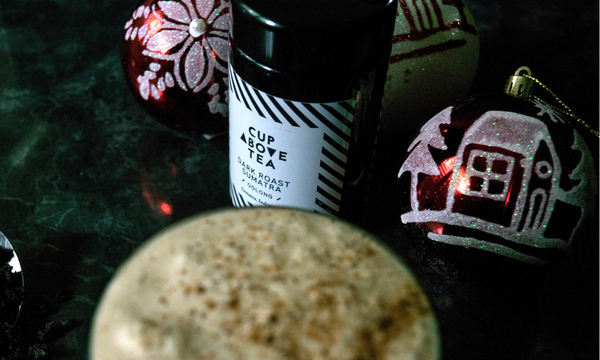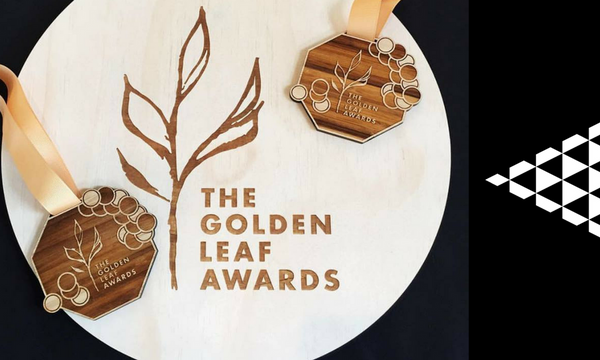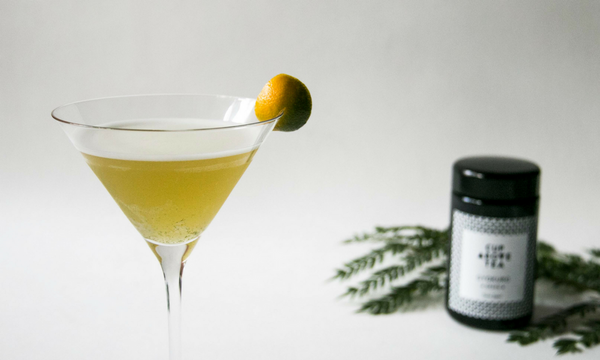Tea: the perfect partner for fine produce

As a chef, food stylist and recipe author, Jeffrey Simonetta has worked and cooked with some of Australia’s most influential chefs. A master of fusing traditional with modern, Jeff is deeply passionate about provenance and using the finest quality ingredients, and that extends to tea.
[caption id="attachment_6585" align="alignleft" width="290"] Photograph courtesy of Benjamin Townsend Photography[/caption]
Photograph courtesy of Benjamin Townsend Photography[/caption]
With some exciting tea-related projects on the horizon through his newest venture, Australian Flavours, Certified Tea Master, Alison Dillon and Jeff have been busy collaborating, tasting, cooking and pairing signature teas with some of Australia’s finest produce.
So what does this flavour expert think after tasting some of the world’s very best tea? We talked to Jeff about his experience and how his tea inspiration has transpired to the plate.
What is it that made you fall in love with food and create a career for yourself based on flavour?
From a very young age, I cooked with my mother and grandparents. My greatest desire was always to become a chef. When I was 14 I got my first ‘food’ job in a bakery. I worked there before school and on weekends. I studied cookery at school, got 100% and topped the country. I was offered an apprenticeship at Rockpool, the best restaurant in Australia at the time, a year before I left high school.
Cooking is in my blood. My family background is thick with Italian culture and this definitely influenced the way I saw cooking and produce. To be Italian is to be passionate. It is to intimately taste wine, sauce, and ripe olives, as well as appreciating simplicity and nature, from the fragrance of the spring air, the skill of the sculptor, and the soul of the painter.
But equally, growing up in Australia with its multi-cultural food focus and easy access to incredible produce has deeply inspired my fusion-style approach to cooking. I’m passionate about sharing quality food with not only my family and friends, but with all who will partake in dining experiences I can provide. I believe that to give food is to give love.
[caption id="attachment_6582" align="alignnone" width="800"] Photo courtesy of Benjamin Townsend Photography[/caption]
Photo courtesy of Benjamin Townsend Photography[/caption]
What stirred your interest in learning more about tea and its application to food?
To the creative chef, tea is an ingredient that has not yet seen its potential in cooking. I always seek out the highest quality product and I wanted to follow this approach with tea.
Knowing the provenance of my ingredients really helps me in putting dishes together, for example understanding the influence that a specific origin can have on flavour profile and how that can be utilised with other ingredients to enhance the overall dish.
[caption id="attachment_6583" align="alignnone" width="800"] Photo: Benjamin Townsend Photography[/caption]
Photo: Benjamin Townsend Photography[/caption]
So, what have you learnt about tea and what surprised you?
These teas were like none I’d tasted before. There was a marked difference in quality that was totally obvious. The Golden Hand Rolled Himalayan Tips in particular was a stand out. This tea has changed my perspective of life!
Asides from that though, we tasted upwards of 15 teas and I loved learning about the different regions and how their origin impacts the flavour profiles. I was surprised about how tea can share so many similar characteristics, but have such a varied bouquet and taste. I was immediately inspired to create some key dishes as I picked up on different characters and mouth feel of the teas.
 Photograph courtesy of Benjamin Townsend Photography[/caption]
Photograph courtesy of Benjamin Townsend Photography[/caption]
What are you looking for when you’re thinking about how to cook with tea or pair it with a dish?
There’s a lot to be considered, especially when using tea as an ingredient in a dish. Things like whether there is a shared molecular flavour profile, the tea’s origin and provenance, its palatability, and the flavour carriers like proteins or fats. I try to work through whether I’m inspired to extract the tea essence and use these flavours, whether I want to infuse the leaf, whether I use the actual leaf itself to create texture or whether I pair the infused tea as a beverage match for the dish. I need to experiment with how the final cooked or steeped flavours pair with the food or whether it’s best to accompanied the dish with a specific tea that I know will hugely enhance the flavours of the meal.
With some teas, it’s obvious. It hits you in the face and the application is simple. Others are more subtle and nuanced and this is great for a chef to explore and play with.
The dishes you experimented with on the day included butter, gelato and a cake. Talk us through your inspiration.
 On tasting the different teas, I instantly recalled similar flavour profiles and bouquets. These were reference points for me. I wanted to play with simple dishes that really expressed the tea. I used Cup Above’s Dark Roast Sumatran oolong to make a tea cake. The tea’s volcanic, earthy flavours were really enhanced when combined with the vanilla in the cake. Plus, the tea characters were so bold they they were still strong enough to cut through the sweetness of the cake with a distinct tea flavour.
On tasting the different teas, I instantly recalled similar flavour profiles and bouquets. These were reference points for me. I wanted to play with simple dishes that really expressed the tea. I used Cup Above’s Dark Roast Sumatran oolong to make a tea cake. The tea’s volcanic, earthy flavours were really enhanced when combined with the vanilla in the cake. Plus, the tea characters were so bold they they were still strong enough to cut through the sweetness of the cake with a distinct tea flavour.
The gelato and butter were inspired by the exclusivity, craftsmanship and exceptional quality of Golden Hand Rolled Himalayan Hand Tips. The leaves are so limited in quantity and so much hard work and effort has been applied by the tea master, that I wanted to do all I could to get the very most out of them. The tea has lovely natural honey characters and I challenged myself to taste enjoy a cup and then create two options to reuse the steeped leaves. I used just two teaspoons of leaf to create each dish and the results were outstanding.
In fact, they were so good that I’m going to publish the recipe in an upcoming cookbook project I’m working on with my friend and photographer, Ben Townsend, as part of an Australian Flavours project.
You were particularly interested in how tea, cheese and honey paired. Why?
These items share a molecular flavour profile. Certain teas cut right through the sweetness of honey and the proteins and fats in the different cheeses act as a carrier that allows the shared molecules to spread over the taste buds and form pleasant flavour that quite simply, works.

Do you enjoy tea outside of the kitchen?
I most certainly do. I drink tea every evening and often with dinner. I usually drink a strong oolong or a genmaicha. My personal pet peeve is when people think fake scented teas are delicious. It just means they haven’t tasted high quality tea yet that doesn’t need ‘fixing up’ through adding natural or artificial flavours.

What’s your favourite tea and food combination?
It would have to be genmaicha with Szechuan BBQ pork. Yum!
Have you got a simple recipe you can share with us as an into to cooking with tea?
Sure, here are the details for some delicious tea-spiced biscuits using Cup Above Tea’s Himalayan Black tea, though you can use any black loose leaf tea but remember, the higher the quality the better the results. Most home cooks will have these ingredients in the pantry, and it’s the prefect treat to pair with a pot of tea when company drops by.
Ingredients
- 2 teaspoons high quality black tea (such as Cup Above Tea’s Himalayan Black) steeped in ¼ cup water
- 150g butter, chopped
- ½ cup firmly packed dark brown sugar
- ½ cup honey
- 1 teaspoon bicarbonate of soda, sifted
- 1 egg, lightly beaten
- 1 tablespoon ground ginger, sifted
- 1 teaspoon mixed spice, sifted
- ½ teaspoon baking powder, sifted
- 3 cups plain flour, sifted
- Milk chocolate bits, to decorate
Method
- Place butter, steeped tea leaves/water, sugar and honey in a saucepan over medium heat. Cook - stirring for 3 minutes or until sugar is dissolved. Bring to the boil. Remove from heat. Stir in bicarbonate of soda. Transfer to a large, heatproof bowl. Cool.
- Stir in egg, ginger, mixed spice, baking powder and flour until combined. Divide dough in half. Shape into discs. Cover with plastic wrap. Refrigerate for 1 hour or until firm.
- Preheat oven to 180°C/160°C fan-forced. Grease 3 baking trays. Line with baking paper. Roll 1 dough disc between 2 sheets of baking paper until 3mm thick. Use a cookie cutter to cut shapes from dough, re-rolling dough scraps. Place, 2cm apart, on prepared trays. Repeat with remaining pastry disc.
- Bake, 1 tray at a time, for 8 minutes or until just firm to touch. Stand on trays for 5 minutes. Transfer to a wire rack to cool completely.
Put the kettle on, make a pot of tea and enjoy!

Leave a comment
We would love to hear what you think. Leave us your thoughts on this article.
You Might Also Like...

Homemade Eggnog Infused with Oolong Tea
Oolong Tea Eggnog - the perfect festive tea-infused treat for the holiday season. It's quick, easy and screams Christmas!


